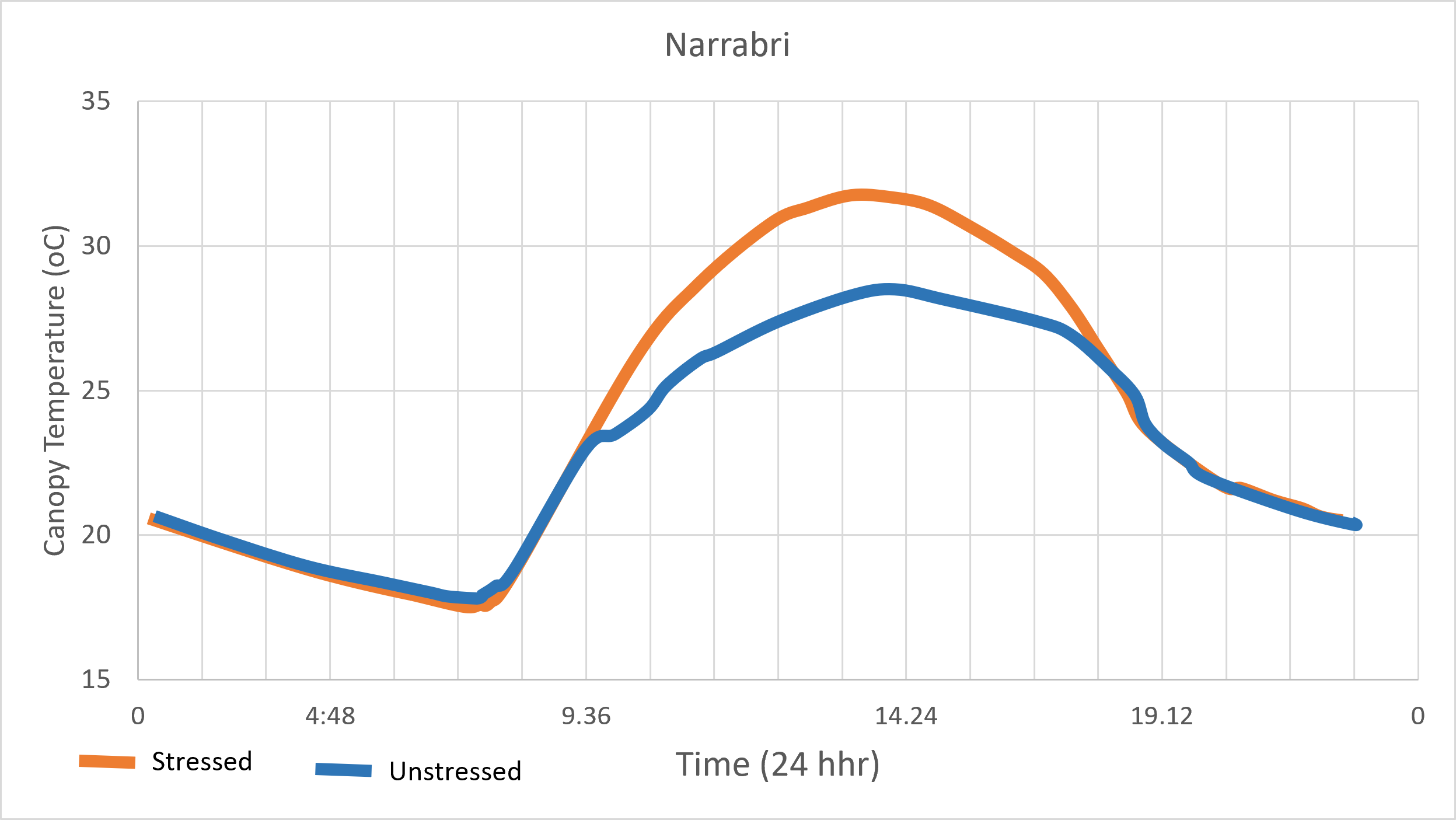One of the variables that can significantly affect the accuracy of plant tissue analysis in cotton is plant stress, particularly plant water stress. Currently, this is avoided by limiting sampling to a particular day in the irrigation cycle or after rain and time of day and with some reference to soil moisture probe readings.
With the increasing use of canopy temperature as an additional indicator of water stress, the canopy temperature approach may be useful as a guide for plant tissue sampling for nutrient status. All plants have an optimum temperature for physiological functioning, e.g. 28°C for cotton.
Confirming the crop canopy temperature is within the “non-stressed” range using an infra-red thermometer prior to sampling may extend the sampling window or help avoid sampling crops that may be outside their window of temperature for optimum physiological function. An example of this is when evapo-transpiration is limited even from moist soil as a result of high atmospheric humidity, and the canopy temperature rises.
Hand-held infra-red thermometers are widely available and may be a useful tool for the field agronomist to help make decisions about the timing of practices that have high sensitivity to short-term plant water stress.
To monitor the impact of crop canopy temperature on yield, a longer-term continuous monitoring approach has been suggested, with the accumulated growth “deficit” hours being more related to the final yield.


